Filter by
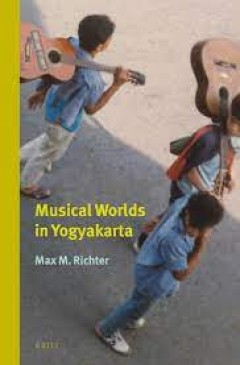
Musical worlds in Yogyakarta
Musical worlds in Yogyakarta is an ethnographic account of a vibrant Indonesian city during the turbulent early post-Soeharto years. The book examines musical performance in public contexts ranging from the street and neighbourhood through to commercial venues and state environments such as Yogyakarta’s regional parliament, its military institutions, universities and the Sultan’s palace. It…
- Edition
- -
- ISBN/ISSN
- 9789004253490
- Collation
- -
- Series Title
- -
- Call Number
- -
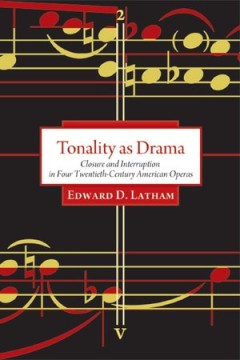
Tonality as Drama : Closure and Interruption in Four Twentieth-Century Americ…
This is an analytical monograph by a Schenkerian music theorist, but it is also written by one performer and enthusiast for another. Tonality as Drama draws on the fields of dramaturgy, music theory, and historical musicology to answer a fundamental question regarding twentieth-century music: why does the use of tonality persist in opera, even after it has been abandoned in other genres? Combin…
- Edition
- -
- ISBN/ISSN
- 9781574412499
- Collation
- 224 halaman
- Series Title
- -
- Call Number
- 700 LAT t
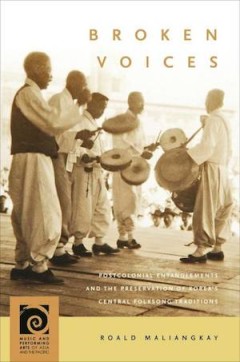
Broken Voices : Postcolonial Entanglements and the Preservation of Korea's Ce…
Broken Voices' is the first English-language book on Korea's rich folksong heritage, and the first major study of the effects of Japanese colonialism on the intangible heritage of its former colony. In 2009, many Koreans reacted with dismay when China officially recognized the folksong 'Arirang', commonly regarded as the national folksong in North and South Korea, as part of its national intang…
- Edition
- -
- ISBN/ISSN
- 9780824878337
- Collation
- 264 halaman
- Series Title
- -
- Call Number
- 700 MAL b

Composing the Party Line : Music and Politics in Early Cold War Poland and Ea…
Examines the exercise of power in the Stalinist music world as well as the ways in which composers and ordinary people responded to it. A comparative inquiry into the relationship between music and politics in the German Democratic Republic and Poland from the aftermath of World War II through Stalin's death in 1953, concluding with the slow process of de-Stalinization in the mid-to-late 1990s.…
- Edition
- -
- ISBN/ISSN
- 9781557537027
- Collation
- -
- Series Title
- Central European Studies
- Call Number
- 700 TOM c

Sea-changes : Melville - Forster - Britten: The story of Billy Budd and its o…
E. M. Forster first encountered Billy Budd in 1926. Some twenty years later, he embarked on a collaboration with Benjamin Britten and Eric Crozier, adapting Melville’s novella for the opera stage. The libretto they produced poignantly reaffirms the Forsterian creed of salvation through personal relationships. This study presents an extensive exploration of Forster’s involvement in the inter…
- Edition
- -
- ISBN/ISSN
- 9783863950453
- Collation
- -
- Series Title
- -
- Call Number
- 800 ROC s
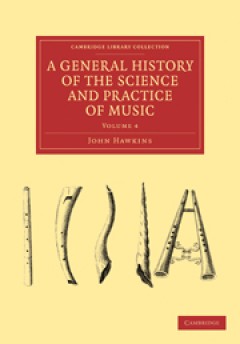
A General History of the Science and Practice of Music
Sir John Hawkins (1719–1789), lawyer, friend of Samuel Johnson and member of the Academy of Ancient Music, published his pioneering five-volume history in 1776 just after the first volume of Burney's. Hawkins' work suffered badly in the resulting competition between the two, partly because of his difficult personality, partly because of the scholarly style of the writing contrasting with Burn…
- Edition
- -
- ISBN/ISSN
- 9780511997549
- Collation
- -
- Series Title
- Cambridge Library Collection - Music
- Call Number
- -

A General History of the Science and Practice of Music
Sir John Hawkins (1719–1789), lawyer, friend of Samuel Johnson and member of the Academy of Ancient Music, published his pioneering five-volume history in 1776 just after the first volume of Burney's. Hawkins' work suffered badly in the resulting competition between the two, partly because of his difficult personality, partly because of the scholarly style of the writing contrasting with Burn…
- Edition
- -
- ISBN/ISSN
- 9780511997525
- Collation
- -
- Series Title
- Cambridge Library Collection - Music
- Call Number
- -
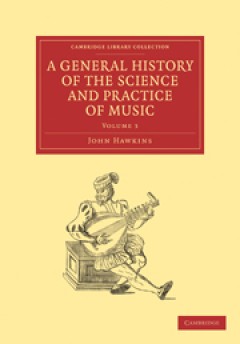
A General History of the Science and Practice of Music
Sir John Hawkins (1719–1789), lawyer, friend of Samuel Johnson and member of the Academy of Ancient Music, published his pioneering five-volume history in 1776 just after the first volume of Burney's. Hawkins' work suffered badly in the resulting competition between the two, partly because of his difficult personality, partly because of the scholarly style of the writing contrasting with Burn…
- Edition
- -
- ISBN/ISSN
- 9780511997532
- Collation
- -
- Series Title
- Cambridge Library Collection - Music
- Call Number
- -

A General History of the Science and Practice of Music
Sir John Hawkins (1719–1789), lawyer, friend of Samuel Johnson and member of the Academy of Ancient Music, published his pioneering five-volume history in 1776 just after the first volume of Burney's. Hawkins' work suffered badly in the resulting competition between the two, partly because of his difficult personality, partly because of the scholarly style of the writing contrasting with Burn…
- Edition
- -
- ISBN/ISSN
- 9780511997518
- Collation
- -
- Series Title
- Cambridge Library Collection - Music
- Call Number
- -
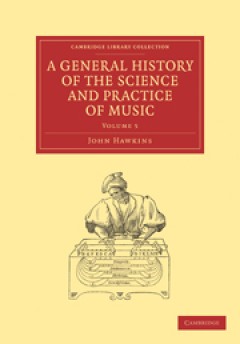
A General History of the Science and Practice of Music
Sir John Hawkins (1719–1789), lawyer, friend of Samuel Johnson and member of the Academy of Ancient Music, published his pioneering five-volume history in 1776 just after the first volume of Burney's. Hawkins' work suffered badly in the resulting competition between the two, partly because of his difficult personality, partly because of the scholarly style of the writing contrasting with Burn…
- Edition
- -
- ISBN/ISSN
- 9780511997556
- Collation
- -
- Series Title
- Cambridge Library Collection - Music
- Call Number
- -
 Computer Science, Information & General Works
Computer Science, Information & General Works  Philosophy & Psychology
Philosophy & Psychology  Religion
Religion  Social Sciences
Social Sciences  Language
Language  Pure Science
Pure Science  Applied Sciences
Applied Sciences  Art & Recreation
Art & Recreation  Literature
Literature  History & Geography
History & Geography